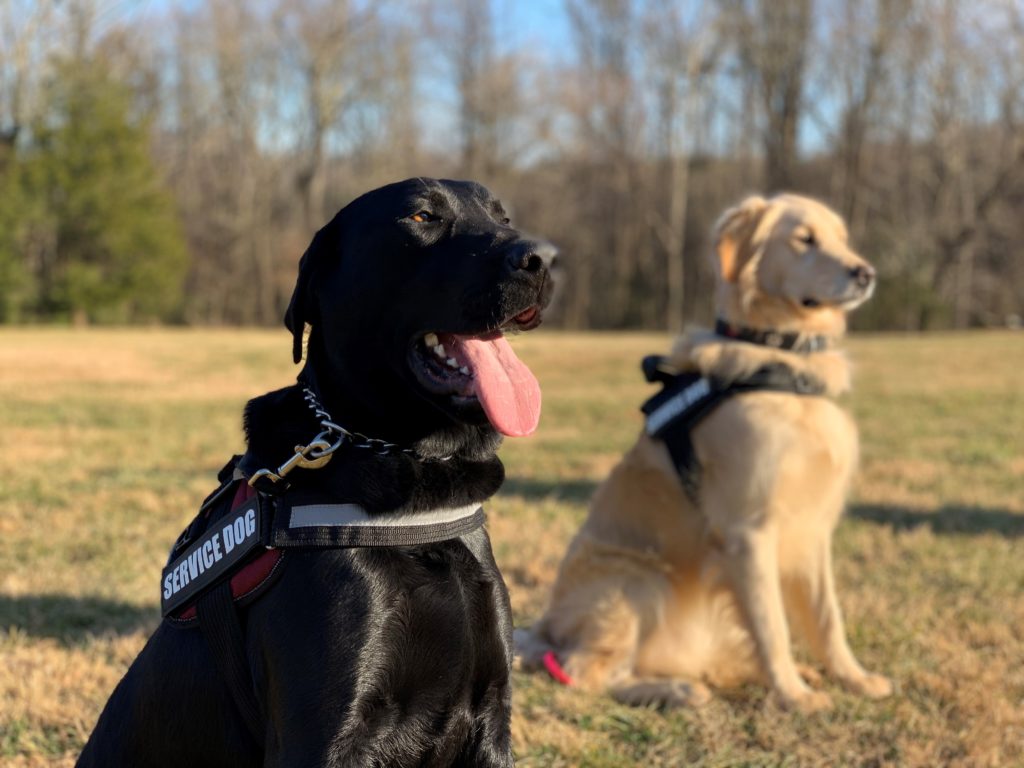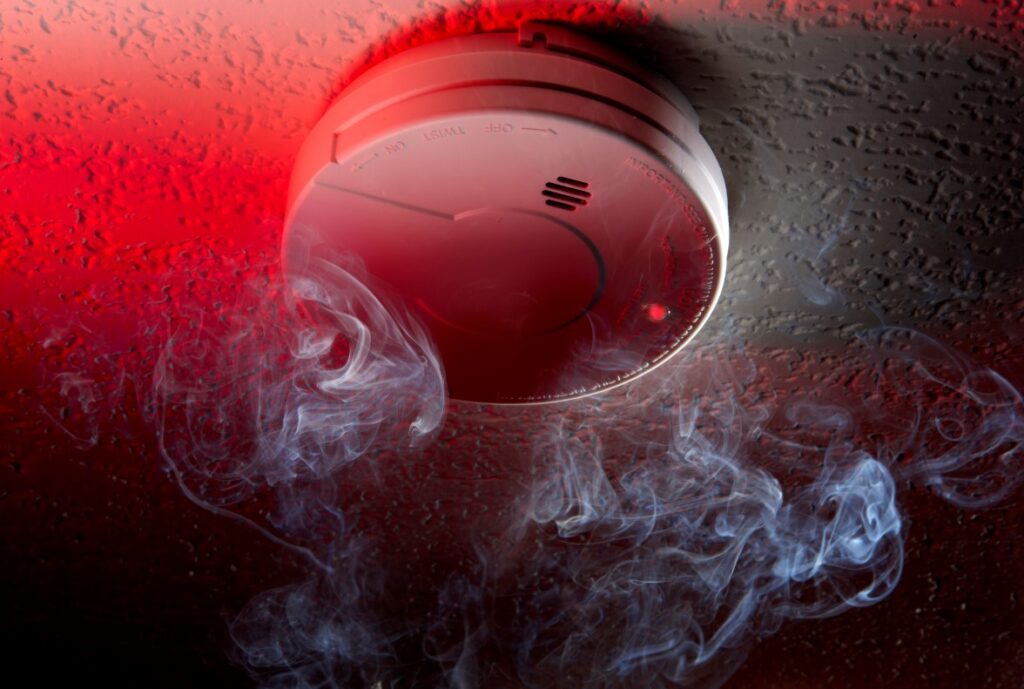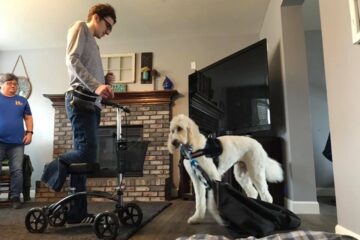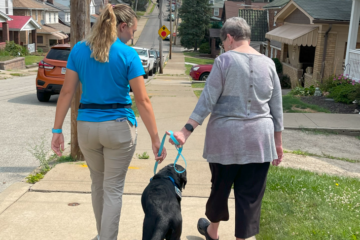Years ago, when people envisioned a service dog, they would typically visualize a mobility dog helping their owner to get groceries or picking up dropped keys for their handler. These days, service dog jobs have been expanded to include a number of different types of service dogs. Autism assistance dogs, stability and mobility service dogs, PTSD service dogs, seizure, allergy and diabetic alert dogs have all made their entrance as being incredibly useful tools to the humans who need them simply to function on a daily basis.
In this article, we will be discussing a very unique type of service dog – one that assists a deaf person with critical sounds that they cannot hear themselves. A service dog who helps their deaf handler is called a Hearing Service Dog. The job of this service dog is to alert their handler anytime there is an important sound in a manner that is a) obvious enough for them to notice, and b) consistent enough to make sure that the handler will respond.
According to the NIDCD (National Institute on Deaf and Other Communication Disorders) which operates through the NIH, approximately 37.5 million adults in the United States experience some degree of hearing loss. One in eight people in the US aged 12 years and older have hearing loss in both ears. These numbers imply that the job of a Hearing Service Dog is vital to minimizing stressors induced by hearing loss in the daily operations of a statistically significant percentage of the US population.
What exactly do these dogs do? What sort of tasks are they responsible for, and how is it possible that an animal could be such a great help to a human with hearing loss or deafness? This article will address these questions, and will also explain the benefits of having a Hearing Service Dog, the types of tasks that these dogs are trained to do, and a brief synopsis on how Highland Canine trains their Hearing Service Dogs.

Who needs a Hearing Service Dog?
There is a significant percentage of individuals in the United States suffering from permanent hearing loss. Although many of these individuals use hearing aids, hearing aids can malfunction, get lost or break. They are also not frequently worn at night – a time when most people are vulnerable and fall victim to unfortunate accidents such as house fires.
According the to NIH, age is the strongest predictor of hearing loss throughout individuals aged 20-69 years, with the greatest amount of hearing loss occurring in the 60-69 group. Because the greatest percentage of hearing loss is experienced by adults, this implies that the majority of those impacted are no longer living with parents/guardians and may even live alone. As hearing loss and deafness most greatly impacts those older than 60 years, the chances of that individual living on their own becomes greater as affecting individuals may lose their spouse, have gotten divorced and not remarried, or be living with a significant other who is also experiencing some degree of hearing loss.
Anytime these affected individuals are alone, they are more vulnerable to preventable accidents where an auditory signal is typically used to notify people that something notable is occurring; this could be a fire alarm, an important phone call, an alarm clock or a knock at the door.
It is for reasons such as these that well trained Hearing Service Dogs are such a valuable asset to those experiencing extensive hearing loss. These dogs literally act as another set of ears to notify their handler in an effective manner that an auditory alarm is going off. For those of us who already own dogs, we know firsthand that their ears can be pretty incredible! This training channels their natural hearing capabilities and provides their handler with a tool to ensure that they do not miss an important alarm.

What are the benefits of a Hearing Service Dog?
Dogs can be trained to respond to a virtually limitless number of auditory alarms or sound. They are also mobile, enjoy being with their person, and have fantastic natural hearing capabilities. These factors make dogs prime candidates for acting as a solid layer of security when their handler is unable to hear or respond to important sounds. Handlers do not need to worry about forgetting a mechanical notification system in another room of the house, or missing a fire alarm during nighttime when their hearing aids are likely off and on the nightstand beside them.
Dogs are also excellent company for individuals who may live alone, and generally provide a number of psychological benefits that have been proven to come alongside owning a pet, and even more so because handlers do not need to worry about missing something important while their service dog is with them.
Hearing Service Dogs can save lives, keep their handlers from feeling isolated and provide an infinitely valuable service for many people. Hearing Service Dogs are always trained to perform tasks specific to their handler’s needs, which will include responding to different auditory stimuli depending upon the individual and their level of hearing loss.
Because many handlers of Hearing Service Dogs are partially or fully deaf, the responses to these stimuli need to be obvious, consistent and accomplished in in a manner that the handler can respond to. Typically this includes an obvious physical indication which is sometimes paired with a physical cue (such as a poke with the dog’s muzzle) if a handler is sleeping or failing to respond to the visual cue alone.

Which tasks are Hearing Service Dogs trained to perform?
All service dogs are trained to perform specific tasks individualized upon the needs of their handler. Hearing Service Dogs are no exception, and tasks may vary from one handler to another. The one consistent component of every Hearing Service Dog’s tasks is that they will be alerting to an important auditory stimuli which they have been trained specifically to respond to.
Many times, this includes responding to:
- Fire alarms
- Doorbells
- An alarm clock
- A phone ringing
- Knocks at the door
- The loud bang of a falling object or a crashing sound (if the handler specifically wants an indication trained when these sounds occur).
When the sounds in which a service dog was trained to indicate upon occurs, the dog will typically respond by quickly and enthusiastically approaching the handler and then running to the source of the sound. If the handler does not respond, they will repeat the action indefinitely until the handler responds to the indication. If the handler is sleeping, this indication will, many times, include physical contact such as a push from the dog’s muzzle to ensure that their handler can respond to the trained stimulus as quickly as possible.
How does Highland Canine train Hearing Service Dogs?
In order to effectively train a Hearing Service Dog, a trainer must first learn about the specific needs and important lifestyle considerations of the future handler. After the needs have been determined, a list of tasks to train must be developed and the sounds which the future service dog will be responding to need to be utilized as closely as possible in the training. Many times, this includes using real fire alarms, a variety of phone notifications and rings, door knocks, doorbells and more.
The next step is desensitizing the future service dog to any sounds that they may be afraid of, such as the smoke alarm. We want the dog to get as close to the sound’s source as possible, which might include getting right underneath the smoke alarm if safe and necessary. Many dogs are naturally uncomfortable with extremely loud, high pitched sounds, so it is critical to create positive associations with this sound while making them comfortable enough to get as close to the source as necessary.
After this, each task is trained one at a time in a controlled environment. Once the dog is performing exactly as we need them to, the task must be generalized. Generalization includes performing the task in as many locations as possible. This typically includes training in different houses, outside and in public locations.
Alongside task specific training, it is also critical to socialize service dogs from a young age with humans, other animals, etc. to optimize environmental stability, as well as doing plenty of obedience training in distraction-laden environments. This ensures that they will be well-mannered and able to effectively perform all trained tasks regardless of where they are or what is occurring around them.
Hearing Service Dogs are a truly valuable asset to the deaf and hearing impaired, and provide long-term companionship and a potentially life saving service to the humans who need them most.



0 Comments